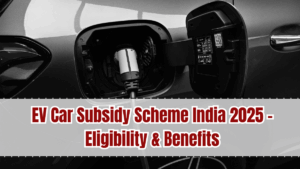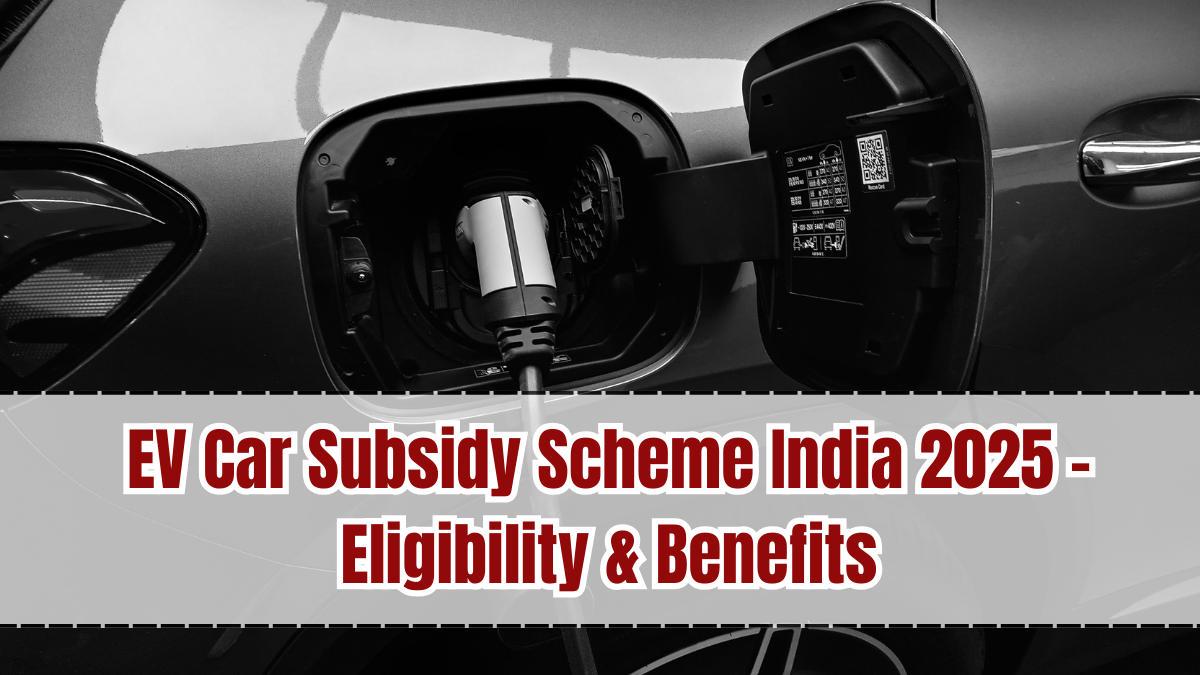India is at a critical stage in its journey toward green mobility. With electric vehicles gaining momentum, the government has introduced the EV Car Subsidy Scheme 2025 to make sustainable transportation affordable for the masses. While electric cars were once seen as expensive and out of reach for many buyers, this scheme ensures that more people can own them without stretching their budgets. The initiative is not just about encouraging car ownership; it is about creating a cleaner environment, reducing fuel imports, and boosting the nation’s self-reliance in the automobile sector.

Why the EV Car Subsidy Scheme Matters
The EV subsidy scheme 2025 plays a vital role in breaking down barriers for buyers. Electric cars typically cost more than petrol or diesel vehicles due to their advanced battery technology. Without financial support, many families hesitate to make the shift despite long-term savings on fuel. By offering upfront subsidies, tax exemptions, and lower registration charges, the government helps bridge this gap. This initiative also encourages automakers to bring more affordable EV models to the Indian market, creating healthy competition and innovation.
Key Benefits of the EV Car Subsidy Scheme 2025
Before diving into the list of eligible cars, it is important to understand the benefits. Buyers can expect several direct and indirect advantages from this program.
-
Lower purchase price – Subsidies bring down the on-road price of EVs significantly.
-
Tax exemptions – Reduced GST and road tax make EV ownership lighter on the wallet.
-
Fuel savings – Owners can save thousands each year by avoiding petrol or diesel expenses.
-
Eco-friendly choice – Driving EVs helps cut down carbon emissions and air pollution.
-
Government support for infrastructure – More charging stations are being set up nationwide to support EV adoption.
Popular EV Cars Covered Under Subsidy in 2025
The scheme covers several models across different price segments, making it easier for people to select based on their budget.
-
Tata Nexon EV – One of the most popular EVs in India, offering good range and features at a subsidized price.
-
MG ZS EV – Known for its premium interiors and long range, now made more affordable under the subsidy scheme.
-
Hyundai Kona Electric – A global favorite, its price drop under the subsidy makes it attractive for city buyers.
-
Mahindra XUV400 EV – With aggressive pricing and subsidy benefits, this SUV is a strong contender in 2025.
-
Citroën ë-C3 – Designed for budget-conscious buyers, this compact EV becomes even more competitive with subsidies.
Eligibility Criteria for Subsidy
To make sure benefits reach genuine buyers, the government has outlined eligibility conditions. Only personal car buyers who register their vehicle in India can avail of the subsidy. Commercial fleets may qualify under separate programs. The subsidy applies only to models approved under the scheme and sold through authorized dealers. Buyers may also need to provide Aadhaar and PAN details during registration to confirm eligibility.
How to Apply for EV Subsidy in 2025
Applying for the subsidy is straightforward. After choosing an eligible EV model, buyers can purchase it from authorized dealers. The subsidy amount is usually deducted upfront, reducing the on-road price instantly. In some states, additional benefits like free parking, reduced toll charges, and priority permits are also provided. Banks and NBFCs are offering attractive loan options aligned with the subsidy program, making it easier for families to finance their EV purchases.
The Future of EV Subsidies in India
While subsidies are necessary now to encourage adoption, the long-term goal is to make EVs naturally affordable through economies of scale and innovation in battery technology. Experts predict that by 2030, subsidies may no longer be needed as production costs will reduce significantly. Until then, the EV Car Subsidy Scheme 2025 remains a crucial step in India’s transition to sustainable mobility.
FAQs
What is the EV Car Subsidy Scheme 2025?
It is a government initiative that reduces the purchase cost of electric cars through direct subsidies, tax exemptions, and registration fee waivers.
Which cars are eligible under the EV Car Subsidy Scheme 2025?
Popular models like Tata Nexon EV, MG ZS EV, Hyundai Kona Electric, Mahindra XUV400, and Citroën ë-C3 qualify under the scheme.
How can I apply for the EV car subsidy in 2025?
The subsidy is applied directly at the time of purchase from authorized dealers, so buyers don’t need to file separately.
Are commercial vehicles covered under this scheme?
Commercial fleets may have separate subsidy programs, but the 2025 scheme primarily focuses on individual car buyers.
Will EV subsidies continue after 2025?
Yes, but the amount may change depending on government policies and the pace of EV adoption in India.
Click here to know more.
